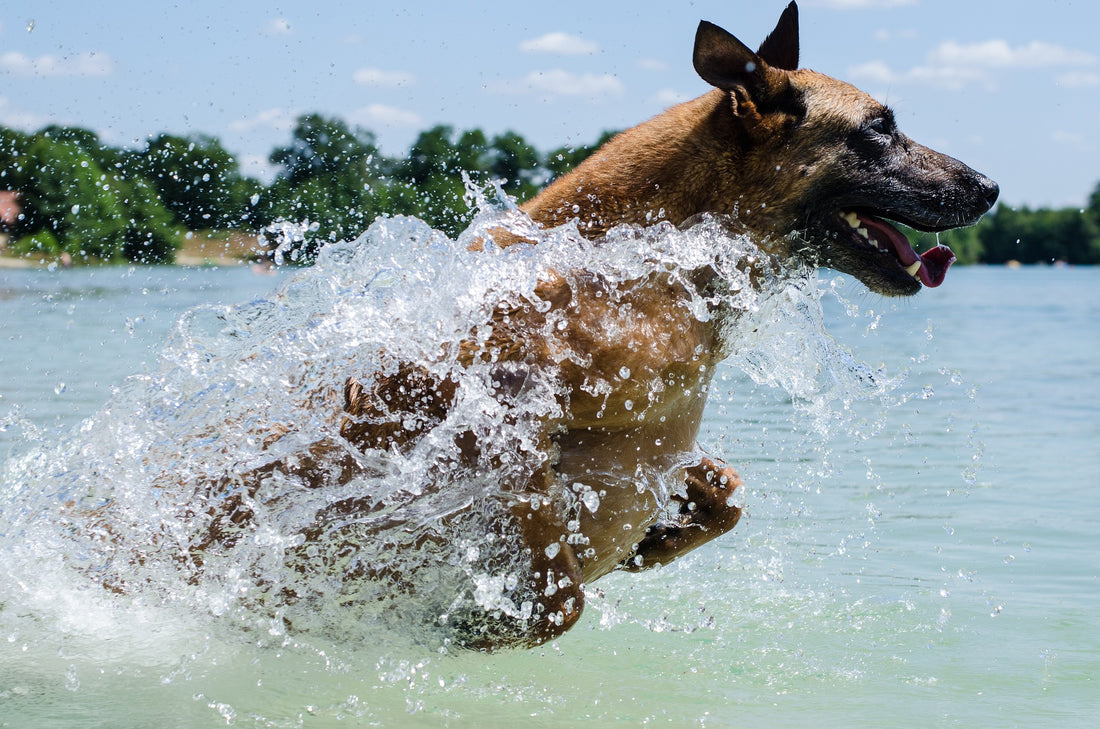
Making a Splash: A Guide to Teaching Your Dog to Swim
Partager
Swimming is an excellent way to keep your dog active and healthy, especially during hot summer months. However, not all dogs are born natural swimmers, and some may need some help learning how to swim. In this blog post, we will discuss some tips and techniques to teach your dog how to swim.
-
Start in shallow water: Before you take your dog to a deep pool or lake, start in shallow water. Find a spot where the water level reaches your dog's chest or belly. You can even use a kiddie pool to help your dog get used to the water. Let your dog explore the area on their own, and let them get comfortable with the water.
-
Use a flotation device: A flotation device can be an excellent aid when teaching your dog to swim. A dog life jacket will help your dog stay afloat and give them more confidence in the water. Start by putting the life jacket on your dog and let them get used to it before entering the water.
-
Support your dog: When your dog is ready to enter the water, support them by placing one hand under their belly and the other hand behind their back legs. Gently lift them up and let them paddle their legs. Gradually, release your support as they become more comfortable and confident in the water.
-
Use positive reinforcement: Positive reinforcement is essential when teaching your dog to swim. Praise and reward your dog for their progress and good behavior. Treats, verbal praise, and affection can help motivate your dog to continue swimming and build confidence in the water.
-
Don't force your dog: Remember that not all dogs are natural swimmers, and some may not like the water at all. Don't force your dog into the water if they're not comfortable. Instead, try again another day and start from the beginning. Be patient and encouraging with your dog, and they will eventually learn to enjoy swimming.
-
Be prepared with a first aid kit: Accidents can happen even when swimming with your dog. Always have a first aid kit on hand in case of an emergency. Your kit should include items such as bandages, antiseptic solution, scissors, and tweezers.
While teaching your dog to swim is an important step in their safety around water, it's equally important to ensure they learn to swim without relying on a life jacket. It's essential to remember that a life jacket is a safety tool, not a substitute for proper swimming ability. If your dog becomes too dependent on the life jacket, they may become complacent and develop a false sense of security around water. Therefore, it's crucial to gradually wean your dog off the life jacket and teach them to swim on their own. It's a gradual process, but it's essential for their safety in the long run.
In conclusion, teaching your dog to swim can be a fun and rewarding experience for both you and your dog. Remember to start in shallow water, use a flotation device, support your dog, use positive reinforcement, and never force your dog to swim. Additionally, always be prepared with a first aid kit in case of emergencies. With patience, practice, and encouragement, your dog will be swimming like a pro in no time!